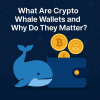The foreign exchange (forex) market, the world’s most liquid and volatile financial market, operates 24 hours a day, exchanging over $7.5 trillion daily. But behind this massive flow of currencies is a dynamic interplay of economic, political, and psychological factors that cause currencies to rise and fall—sometimes within minutes. So, what moves the forex market?
Understanding these drivers isn’t just academic—it’s essential for traders, investors, institutions, and policymakers seeking an edge in navigating price swings. Let’s decode the forces behind forex movements and equip you with insights that could sharpen your trading acumen.
Table of Contents
ToggleIntroduction to Forex Market Movements
The forex market functions as a decentralized, global platform where currencies are bought and sold. Unlike stock markets, there’s no central exchange; instead, trading happens electronically across financial institutions, brokers, and individuals worldwide.
But why do currency prices move? Because they reflect the value and health of an economy relative to another. And that comparative value is driven by a multitude of interconnected factors—from economic performance to investor sentiment.
Let’s explore these forex influencers one by one.
Core Economic Drivers of Forex Volatility
Interest Rates and Monetary Policy
Central banks like the Federal Reserve (Fed), European Central Bank (ECB), and Bank of Japan (BoJ) are arguably the biggest influencers of currency values. Their primary tool? Interest rates.
When a central bank raises rates, it attracts foreign capital due to better returns, making the national currency stronger. Conversely, rate cuts can make a currency less attractive. It’s why hawkish and dovish policy shifts often trigger major currency moves.
The Fed’s rate decisions, for instance, can cause ripples across global forex markets—especially when unexpected.
Inflation and Deflation
Inflation, measured by indicators like the Consumer Price Index (CPI), affects purchasing power. High inflation often leads central banks to hike interest rates to cool the economy, potentially boosting the currency—if the inflation isn’t out of control.
Deflation or disinflation (slowing inflation) may lead to rate cuts, weakening the currency.
Traders often price in inflation expectations before official data is released, making forex markets highly responsive to inflation forecasts.
Employment and Labor Data
Few indicators move the markets like the U.S. Non-Farm Payroll (NFP) report. This monthly data provides insights into the strength of the U.S. labor market.
- Strong job growth = bullish USD
- Rising unemployment = bearish USD
Other nations have similar indicators, and traders watch them closely to anticipate central bank responses.
Gross Domestic Product (GDP)
GDP reflects the health of an economy. A growing economy usually leads to stronger currency as investors gain confidence.
However, traders don’t just react to the GDP figure—they anticipate whether it’s above or below forecasts, and how it aligns with central bank goals.
Capital Markets and Forex Correlation
Stock Market Influence
There’s a complex dance between equities and currencies. When a country’s stock market performs well, foreign investors often buy local currency to invest—boosting demand.
However, during market panic or selloffs, money may flow out—pressuring the currency.
For example, when U.S. tech stocks tanked in early 2022, global investors flocked to the USD not for opportunity, but for safety.
Bond Yields and Spreads
Government bond yields are tightly watched in forex. Higher yields typically attract capital inflows, supporting the currency.
The spread between two countries’ bond yields (e.g., U.S. vs. Germany) is a common strategy to forecast pair movements like EUR/USD.
The Role of International Trade
Trade Balances
A current account surplus indicates that a country exports more than it imports, which often supports the local currency. A deficit means it imports more than it exports, potentially weakening the currency.
Forex traders use these data points to forecast long-term trends.
Commodity Currencies
Countries like Australia (AUD), Canada (CAD), and New Zealand (NZD) rely heavily on commodity exports—think oil, metals, and dairy.
When commodity prices rise, these currencies often strengthen. When they fall, the reverse happens.
This is why oil price movements can drive CAD/USD, or iron ore demand from China can influence AUD/USD.
Political and Geopolitical Events
Elections and Policy Changes
Elections create uncertainty. New leadership can shift economic priorities, taxation, trade policy, and more. As a result, currency markets tend to become volatile during election cycles.
For instance, Brexit-related uncertainties led to wild GBP fluctuations, even years after the vote.
Wars, Conflicts, and Political Instability
Geopolitical tensions—like war, terrorism, or diplomatic rifts—often trigger a flight to safety.
Currencies like the U.S. Dollar (USD), Swiss Franc (CHF), and Japanese Yen (JPY) tend to strengthen during global turmoil as traders seek shelter.
This behavior reflects risk aversion, not confidence in those economies per se.
Market Sentiment and Speculation
Risk-On vs. Risk-Off Environments
These terms dominate forex lingo:
- Risk-On: Investors feel optimistic and chase higher returns in emerging markets or high-yield currencies like AUD, NZD.
- Risk-Off: Fear rules, and traders retreat to safe-haven currencies like USD, JPY, or CHF.
Events like U.S. debt ceiling debates, pandemic news, or financial crises can instantly shift sentiment and spark major forex moves.
Human Behavior and Trader Psychology
Let’s be honest—traders are human. Emotions like greed, fear, and FOMO (Fear of Missing Out) often override logic.
- Herd behavior leads to exaggerated price trends.
- Rumors or misinterpreted news can trigger whipsaws.
Understanding sentiment indicators—like the Commitment of Traders (COT) report or speculative positioning—offers an edge in forecasting irrational but powerful moves.
Real-Time News and Economic Releases
Economic Calendars and Flash Reports
Every serious trader lives by an economic calendar. Key scheduled releases include:
- CPI, NFP, PMI (Purchasing Managers’ Index)
- Central bank speeches
- Interest rate decisions
Even a tiny deviation from expectations can send currency pairs on rollercoaster rides—especially when liquidity is thin.
Media Narratives and Breaking News
The tone and framing of news—whether it’s from Bloomberg or a tweet—can influence perception and action.
For example, headlines like “Fed hints pause” vs. “Fed growth concerns” can evoke different reactions, even if the data remains unchanged.
Major Currency Movers
USD – The World’s Reserve Currency
The U.S. Dollar (USD) is king. It’s involved in over 85% of all forex trades and acts as the global benchmark for reserve holdings.
Events like Fed policy, U.S. economic data, or Treasury yield shifts have outsized impact on global currency trends.
EUR – The Common Currency
The Euro (EUR) reflects the economic health of the Eurozone. It’s often influenced by:
- ECB policy
- German economic strength
- Regional risks like debt crises (e.g., Greece)
EUR/USD is the most traded currency pair globally.
JPY – The Safe Haven
The Japanese Yen (JPY) serves as a global risk hedge. During uncertainty, it typically strengthens—even when Japan’s economy is struggling.
Factors influencing JPY include:
- BoJ policy (especially its yield curve control)
- Global risk appetite
- Carry trade unwinding
Others: GBP, AUD, CAD, CHF
- GBP (British Pound): Sensitive to political developments like Brexit, and BoE policy.
- AUD/CAD: Commodity-linked with exposure to China (AUD) and oil (CAD).
- CHF (Swiss Franc): Small but mighty; known for stability and safe-haven status.
Technological and External Market Disruptors
Algorithmic and High-Frequency Trading
Machines now dominate trading volume. Algos react to news in milliseconds, creating sharp, short-lived price spikes—often without human rationale.
This can make forex markets feel “jumpy” and amplify volatility during low liquidity hours.
Blockchain and Digital Asset Influence
While not yet mainstream in FX settlements, crypto adoption and digital central bank currencies (CBDCs) are beginning to affect fiat perceptions.
Events in the crypto world—like Bitcoin surges or stablecoin collapses—can spill over into forex through sentiment channels.
Black Swan Events (e.g., COVID-19, Brexit)
These are rare, unpredictable shocks with massive consequences.
- COVID-19: Crushed emerging market currencies in 2020, strengthened USD initially.
- Brexit: Triggered a multi-year GBP crisis.
Such events can break models, invalidate forecasts, and reshape currency regimes.
Conclusion: Staying Ahead in the Forex Market
The forex market isn’t just about numbers—it’s a living, breathing organism shaped by human emotion, macro forces, and geopolitical drama.
To trade successfully, you need more than charts. You need context. You need to ask:
- What’s the central bank signaling?
- How are investors feeling?
- What does the bond market say?
- What surprises might the next headline bring?
In a market this fast, staying informed is your best strategy. Monitor news, read sentiment, follow economic calendars, and never underestimate the power of psychology.
Because the question “What moves the forex market?” has a dynamic answer—and those who adapt, thrive.
FAQ
Interest rate differentials driven by central bank policy are typically the most influential factor.
Moderate inflation paired with rising interest rates can strengthen a currency. Hyperinflation or unchecked inflation usually weakens it.
.
Absolutely. Elections, wars, or trade policy changes can cause massive volatility in forex markets.
The JPY is seen as a safe-haven due to Japan’s large reserves, trade surplus, and low foreign debt.
Speculators account for a large portion of volume. Their expectations and herd behavior can drive sharp moves.
While still emerging, crypto events increasingly influence sentiment, especially regarding USD and inflation concerns.
About the Author

I’m Ronan Edwards, a funded futures trader and content creator with over 7 years of experience in cryptocurrency and financial markets. My trading journey began in the early boom cycles of 2017 and 2018, where I built a foundation in crypto markets before expanding into forex, gold, and more recently, meme coins.





















